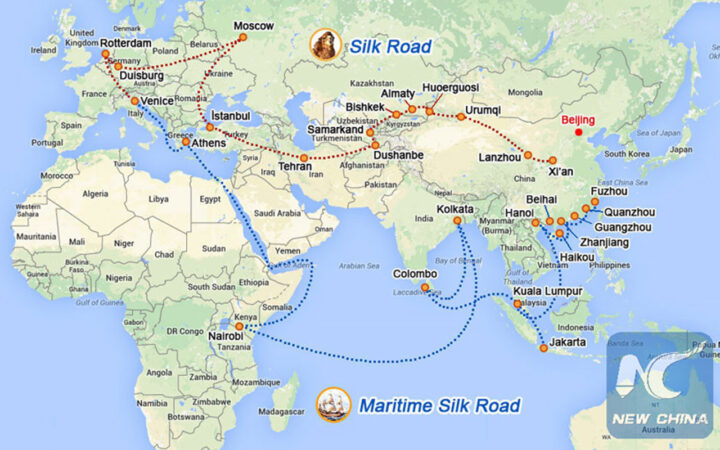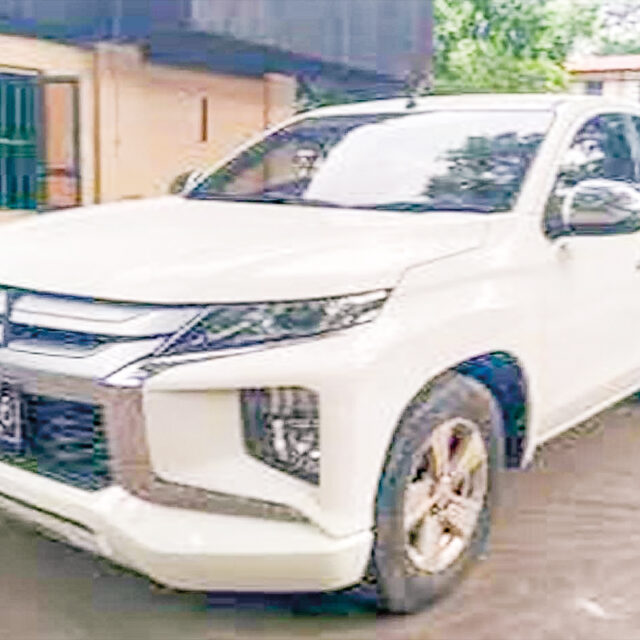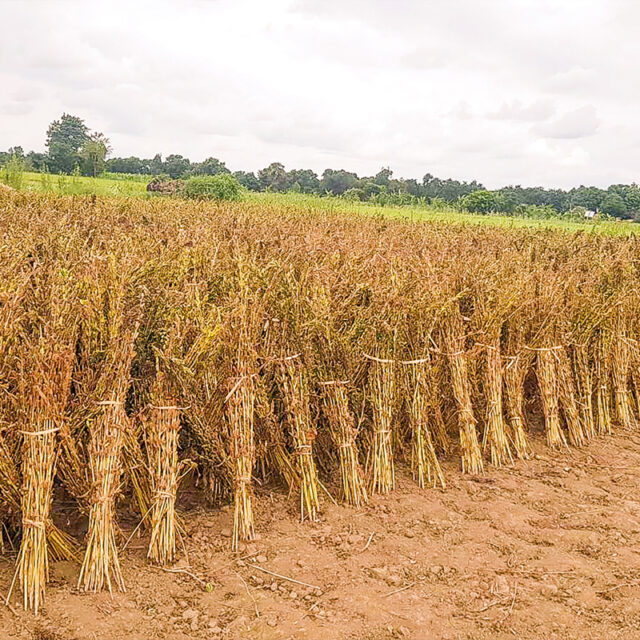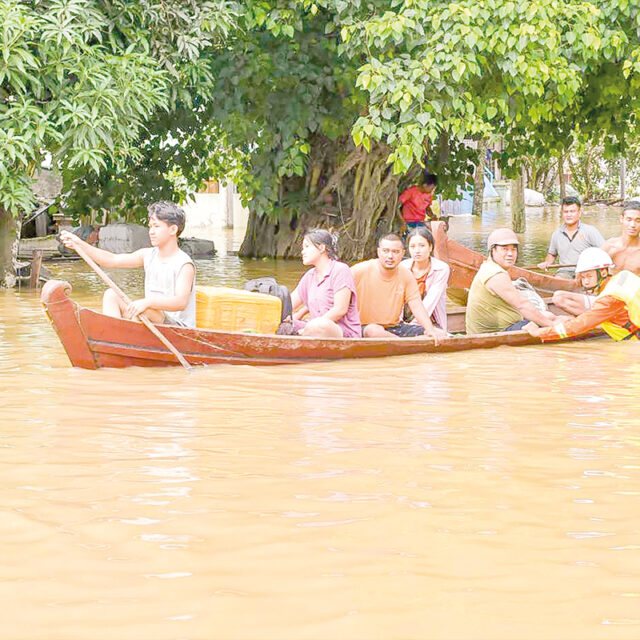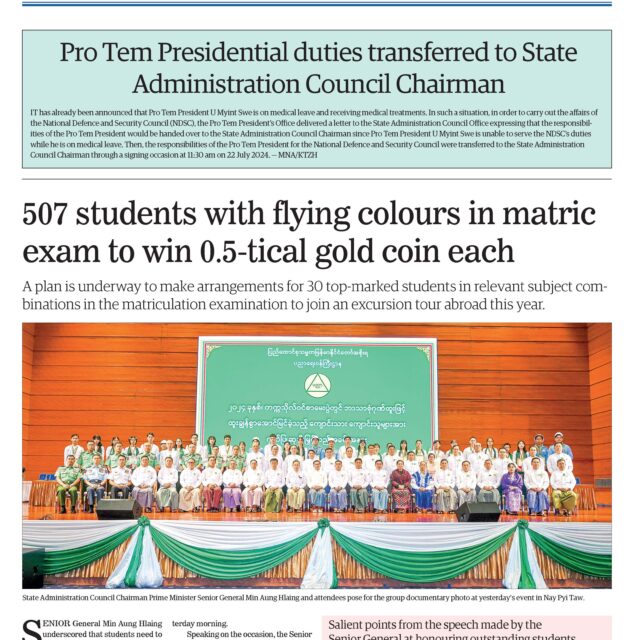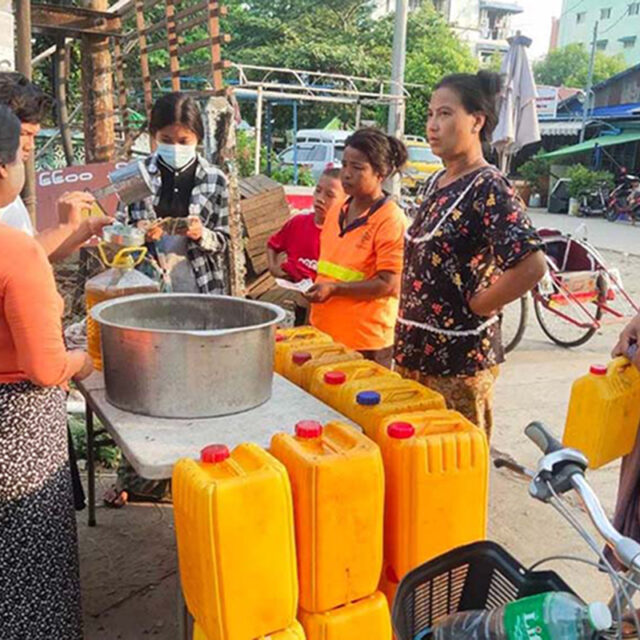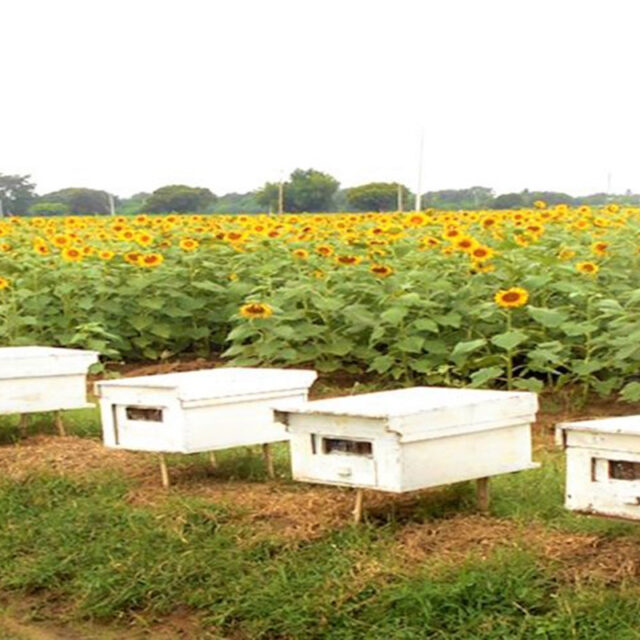Kicking off from the speech in Kazakhstan to build an economic belt along the ancient Silk Road linking China and Europe, to talking about a maritime Silk Road plan in Indonesia, right after President Xi assumed power in 2012, One Belt, One Road has been the brainchild of his, to eventually build concrete support for China’s Global Development, Global Security and Global Civilization initiatives across the globe. A common prosperity for all through peaceful co-existence while building the much-needed soft power that would rival that of the West.
For readers who need a short revision on these three key initiatives, the first one, Global Development Initiative core idea was to adhere to the people-centred approach, with its primary purpose being to overcome the challenges posed by the pandemic and accelerate the implementation of the UN’s 2030 Agenda (Sustainable Development seek to end poverty and hunger, realize the human rights of all, achieve gender equality and the empowerment of all women and girls, and ensure the lasting protection of the planet and its natural resources). The Global Security Initiative is meant to uphold the principle of indivisible security, build a balanced, effective and sustainable security architecture, and oppose the building of national security on the basis of insecurity in other countries. The last, Global Civilization Initiative advocates respect for the diversity of civilizations, the common values of humanity, the importance of inheritance and innovation of civilizations, as well as robust international people-to-people exchanges and cooperation.
Even with all the good plans, refinements are called for to incorporate ‘the weather and the terrain’ (Sun Tzu). From the start, the monikers Economic Belt, Ancient Silk Road, Maritime Silk Road, and One Belt One Road sounded a tad too China-centric, and hence the English version of BRI (Belt and Road Initiative).
Originally designed in part to link backwaters of modern China such as Ningxia and Gangsu to new markets in Eurasia through a network of road, rail and nautical links, BRI is seen essentially as Xi Jinping’s global spanning infrastructure scheme by many developing countries. Under this Xi signature foreign policy, China had laid thousands of miles of tarmac and poured oceans of concrete, building ports, pipelines and pavements across the globe. BRI has already celebrated its 10th anniversary in 2023.
Some stats
From 2000 to 2021 over a twenty-year period, China funded more than 20,000 infrastructure projects, many under BRI, across 165 countries with aid or credit worth $1.3 trillion. And it’s not over yet. Still, many more Chinese government-related entities are extending credit to the developing world today. Lending around $80 billion a year, China remains the single largest source of international development finance in this world of ours.
Cambodia might have built the expressway from its capital to the south beach without BRI, Laos might have accomplished the high-speed train link from its capital to Kunming, the State capital of Yunnan, but realistically, does any country really come into your mind, who would be so willing to invest in the infrastructure in these less developed countries, at such a quick pace. Without the succour from China, these capital-intensive projects would not have come to fruition till today.
Infra schemes proposed by the United States, European Union, IMF (International Monetary Fund) and the World Bank have welcomed competition, as long as all of them are willing to put up real money, rather than expensive ideologies. All of them have abandoned Myanmar people, just because their crooked puppet was not allowed to cheat her way through an election. Even the bankrupt Greeks and Sri Lankans suffered under the stringent conditions for assistance under the IMF.
As a Chinese proverb says, a neighbour close by is better than a family far away. (Jìnlín shèng yun jiā). No wonder, South East Asia was originally chosen to serve as the main focus of BRI. A region of more than 700 million people, the poorer countries of South East Asia were in need of trillions of US dollars in infrastructure investments. With 60 to 70 million Chinese diasporas in neighbouring Southeast Asian countries, many BRI projects have gone well, building roads, rail tracks and power plants, bringing many backwater countries into the modern world and letting the populace enjoy the triumphs of twenty-first-century infrastructure and amenities. For example, the new Phnom Penh-Sihanoukville expressway in Cambodia cut the journey from the capital to the coastal south from five hours to two. The traffic may be sparse at present, based on our recent expedition but it did reflect the country as one willing to do the needful to keep abreast of developments in other contemporary states.
On average, BRI investments were in excess of $10 billion per year over the past 20 years. China claimed that 420,000 jobs have been created in BRI countries and 40 million people lifted out of poverty thanks to BRI-generated growth, over the past ten years.
Detractors
Critics first accused BRI of having no grand plans and having born out of the necessity to accommodate large state-owned enterprises, suffering from overcapacity at home. They said the government was helping them survive by giving them projects to do and helping them make money in the region. They could not be more wrong. Think of China, which has plans for the next 50 years, promises to be carbon neutral by the year 2060, and mapped out in detail to replace coal power plants with many nuclear power plants within the next couple of years, as having no plan was naive at best and at worst, totally ignorant of how politburo, CPC or the government functions in the mainland.
Another charge is how not all countries are willingly embracing the BRI in South East Asia. Indonesia got the biggest share of the BRI and its last President Jokowi was using it to promote his own economic agenda. Cambodia and Laos embraced BRI very willingly. Vietnamese, wary of China’s intentions, largely avoided the BRI. Malaysia has troubled engagements with BRI, yet politicians there are keeping silent for fear of repercussions. West-leaning Philippines with its ASEAN CIA headquarters in Manila is not so eager for BRI projects either.
The strongest criticism of BRI remains the fact that the scheme has contributed to dangerous debt levels in poorer countries and plenty of white elephants, in terms of under-utilized highways, bridges, ports, hubs, airports and railways. Africa has soaked up a larger share of BRI lending, as there is no real and benevolent patron of major infrastructure projects in their war-torn countries prior to China. Unfortunately, infrastructure needs in these countries were very much insatiable. The more you wanted your country’s infrastructure to develop as fast as possible, the more debt you ended up taking on. As countries become laden with debt, many loans have turned sour. Africa has become a financial quagmire. At present, the top eight debtors to China include Pakistan, Angola, Sri Lanka, Ethiopia, Kenya, Zambia, Bangladesh and Laos. The majority of these eight countries are now having to restructure their debts as their national income turns out to be grossly insufficient to service the borrowings. As BRI projects are not solely in their countries, there is nil possibility of any debt waiver in sight, regardless of how benevolent China wants to be.
Whatever the critics might say, there is no denying that BRI is an attractive no-string-attached investment. With the proven capacity to implement projects at incredible speeds, e.g., a 1,000-bed hospital built within a week during Covid, BRI recipient countries can be confident of the swift execution of their projects, with quick access to Chinese finance, know-how and construction teams.
The legacy of BRI in South East Asia looks to be deep with enduring impacts across the region. Contrary to what the detractors said, most countries seem to be in love with the BRI. Even 18 of 27 members of the European Union have signed up to the BRI.
What has changed
After ten years of BRI, South East Asia countries become more cautious and confident in their commercial dealings with China, getting towards the efficient end of their learning curves. Now many are preferring and advocating for a different sort of Chinese investments, in technology, renewable energy, electric vehicles, mobile phones, communication equipment, military hardware, etc.
China is the main trading partner to more than 120 countries. It has provided $240 billion since 2016, in emergency funding of the sort IMF specializes in, to countries in need. Over the past five years, it has also overtaken Russia as the main source of weapons for sub-Saharan Africa. One of the major attractions of partnering with China has been its disdain for value-based interactions. It preaches non-interference. It does not add ideology to its BRI arrangements. Based on the latest survey, 50 per cent of people in Africa see China as having a positive impact on its development. The warnings and interferences by Western governments to the Global South have fallen on deaf ears.
150 countries have so far signed on to the BRI scheme. China’s inclusive model respects the political and legal traditions of different countries, unlike judgmental Western democracies. Chinese-sponsored projects may also appeal to countries that resent US bullying and the EU colonial legacy.
The popularity of BRI has become a prickle in itself. With so many countries taking up loans for the projects, 75 per cent of BRI loans have principal maturity before 2030. And these countries may not have funds to repay those principals. Hence, bilateral debt restructuring deals taking place with many countries right now.
Meanwhile, rivals are catching up. India has stepped up its efforts for more engagement in Africa. The number of Indian embassies in Africa has increased from 25 to 42 between 2012 to 2022. It continued to remain the continent’s fourth-largest trading partner and its fifth-largest FDI source. India cannot offer as much funding or credit as China, so instead, it focuses on offering its home-grown stack of digital platforms, from national ID card management systems to healthcare management systems. India worries more about China-led Asia than the US-led world. While China may be a supermarket for developing countries offering everything under the sun, India acts as an IT store for its offerings to the developing world. The rest of the countries are not resting on their laurels either. They are akin to boutiques; gulf states offering renewable energy, Brazil putting forward food security and South Africa advancing itself as a moral leader.
Once China extended its vision onto Africa, not only did its BRIC rivals act, but also the US and EU responded. The US and the OECD (Organization for Economic Cooperation and Development) already spent more than $200 billion per annum in overseas aid. They attempted to blunt China’s salient into Africa. As of today, the West still leads in Africa. The total trade between Africa and the West (US and EU) is still greater than its trade with China. (Source: IMF). Regardless of BRI’s success, China is unlikely to upend US defence and military partnerships with 76 countries, such as those treaties with Europe, Japan, Korea, or Australia.
Another factor to consider would be waning enthusiasm at home. The Chinese at home see China as exceptionally benevolent and grumble about foreigners who accuse BRI of advancing their own ‘aggressive goals’. Chinese people are used to the spirit of sacrifice. But from the perspective of an ordinary person, it is certainly not necessary to spend a lot of money in a faraway foreign place like Africa. Inadequate returns over ten years of large investments in poorer countries make them cast their doubts on the long-term feasibility of such goodwill of their nation. Thus, the BRI scheme is now shrinking. Some citizens even thought of BRI as free money to foreigners. The dissent may not be loud while the domestic economy is booming, but it might become widespread with a slowing economy at home. For a country that values security and stability above all else, this may not be good news.
The new BRI
Focus has now changed. BRI scheme now seeks out ‘small and beautiful’ projects – less risky, more profitable and with a focus on clean and green energy and digital infrastructure, probably answering client feedback as well as countering fledgling competition.
Maybe it’s worth inviting the world to hitch a hike on the ‘express train of China’s development’ again, in the redesigned version of BRI. Unhappiness in foreign lands, particularly due to their own struggle with BRI debts, has to be addressed. Local hopes of BRI fuelled boom have also faded. One BRI advisor to the government even recommended emphasizing the scheme’s benefits to ordinary Chinese back home, with concrete examples, to continue to garner support for BRI among people.
Hence, smaller projects with large ambitions are in fashion now. Changing politics in recipient countries makes it more difficult for these countries to accept large projects too. Smaller projects generate benefits quickly and give local people a greater sense of ownership.
On the supply side, China is in search of global finance for BRI, including those from rich Muslim countries, with deep-pocket sovereign funds. Saudi joining BRICS and reconciling with Iran, with China’s backing, was, therefore, very important. The focus has also shifted from the breadth and spread of the projects to increasingly on governance, seeing structure, systems and standards as the keys to sustainable development.
The new developing world is not just looking for China’s funds and project implementation prowess. First, they knew China had become a scientific superpower. From the creation of an artificial sun, through fusion, to landing on the moon, they know Chinese technology is at par, if not better than the US and the West. What most of them still may not be aware of is that China now has the highest share of global high-quality, high-impact science papers and China is the leader in many scientific fields ranging from material science and chemistry to engineering and computer science. These factors are going to alter the world’s scientific leadership in the foreseeable future. So, China’s money is not the only thing in demand now.
Take AI (Artificial Intelligence) for example. China now contributes to around 40 per cent of the world’s research papers on AI, compared to ten per cent for the United States and 15 per cent for Europe. Especially in areas such as computer vision and robotics, China has a significant lead in research and development. Growth in the quality and quantity of Chinese science is unlikely to stop anytime soon. The government has just announced a ten per cent increase in funding for science and technology research in 2024. Chinese universities are producing eight times more engineering and science graduates than their US counterparts.
These are the areas in which developing countries cannot catch up on their own merits. They have neither the capacity nor the capabilities to master science and technology on their own. Now, there is an opportunity to reshape the BRI and upgrade the uptake of it once and for all. China can start by how to effectively share some of its scientific know-how.
Chinese philosopher Lao Tzu once said ‘Give a man a fish and you feed him for a day. Teach him how to fish and you feed him for a lifetime. While the United States goes low by restricting its science, banning and sanctioning Huawei, and denying Chinese students from top science universities, China can go high by being benevolent, decent, thoughtful and keeping up to its ‘shared prosperity’ motto by not just financing and funding the hardware but also supporting and underwriting the software through the promotion of scientific development of BRI current and potential recipients.
The soft power deal
A significant and intangible benefit of BRI would be a visible increase in China’s soft power, especially as the de facto leader of the Global South. Not only President Xi but also Modiji and Luis Inacio Lula da Silva wanted to be the voice of the Global South.
Pardee Centree for International Futures (PCIF) at the University of Denver, USA has developed a power matrix named Formal Bilateral Influence Capacity (FBIC), to track relational power in the international system. It is measured by two dimensions, bandwidth and dependence. The former refers to the extent of connections back and forth, the volume of trade, diplomatic representations, etc., while the latter quantifies how much the smaller country needs the bigger country’s arms, loans, investments, etc. Even without statistics to back it up, it can easily be seen why China’s influence capacity or soft power is at the very top.
Based on PCIF, from 1992 to 2020 the number of countries over which China had more influence than the United States almost doubled from 33 to 61. China is already the leader and a part of the global south, an enlarged family of developing countries, that believe in true multilateralism and universal values of common prosperity. BRI is an integral part of building that influence.
Two-thirds of Chinese financing (most of them through BRI) went to ‘toss-up’ countries, where neither China nor the United States clearly holds sway. Based on voting and funding records, if such a government increased its share of votes at the UN General Assembly that aligns with China by ten per cent points, it can expect a 276 per cent increase, on average, in financing from Beijing. From the year 2000 to 2021-, low- and mid-income countries voted on decisions with China 75 per cent of the time at the UN General Assembly. Talking about money and influence intertwining in modern politics!
When all is said and done, the mega BRI projects may have added much to the national debt but it did lower the cost of transport and logistics across the land and the sea. It may seem like white elephants currently, but the countries now have infrastructures that they can be proud of and show off to attract foreign investors. The Chinese may have implemented the projects, but these works created job and learning opportunities for many developing countries, helping restrict the outflow of talent to the developed world. The recipient country governments may not be democratic, measured by the Western standards of yardsticks, yet it is a reflection of a government continuing to fight for economic opportunities and promote the public interests. Any successful project completion implies a country that provides for the poor, works for working families, helps out in the heartland and revitalizes the rural landscape. At the end of the day, for those rushing to join the global growth circus and break out of the poverty cycle, they simply have to choose development over democracy, country over regional rights, hope over infighting, determination over indecision and economy over freedom of expression, and finally, people over politics. Life is a matter of choices. Every choice you make makes you. As the Knight guarding the Holy Grail (Jones and the Last Crusade) said: “But choose wisely, for while the true Grail will bring your life, the false Grail will take it from you!”
